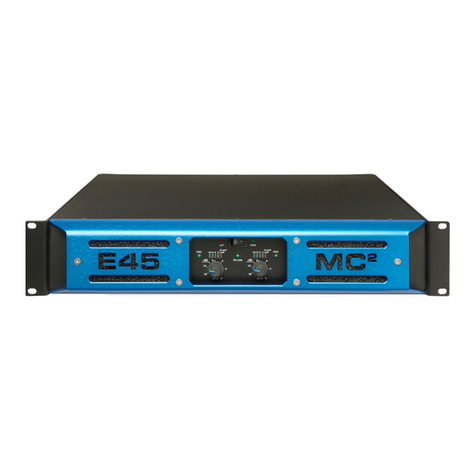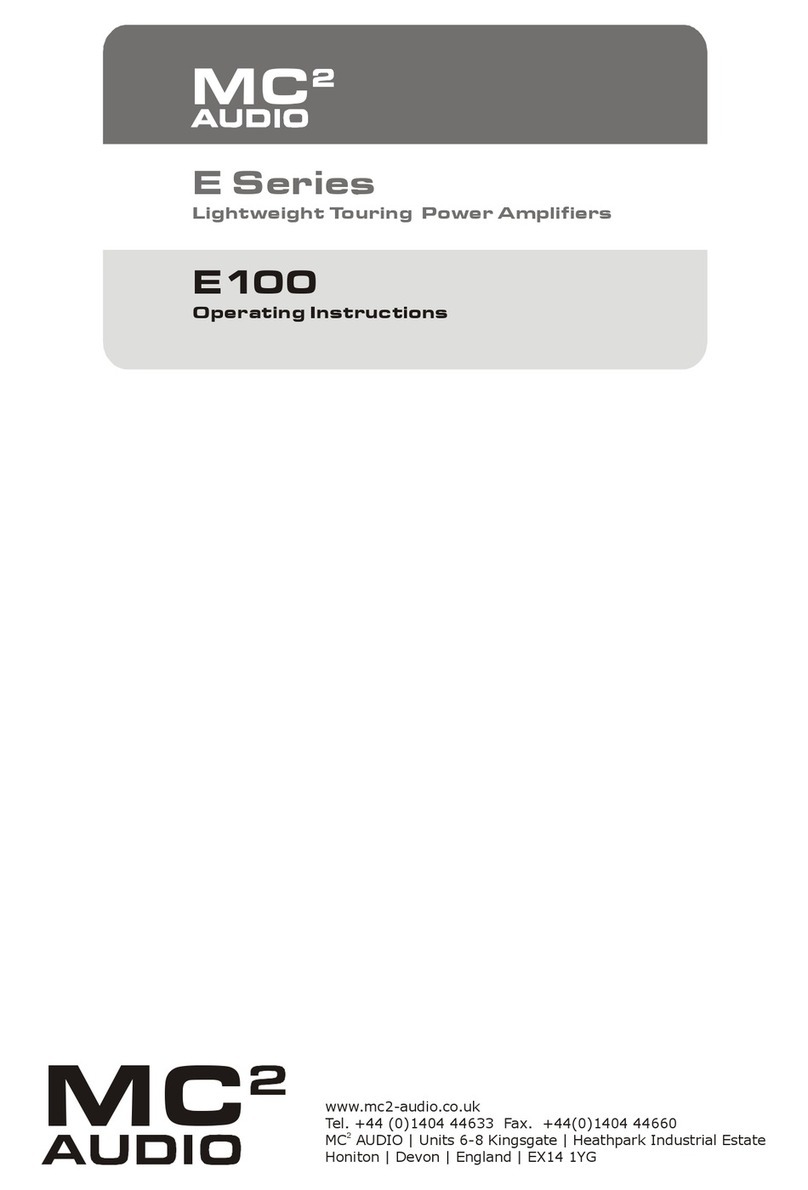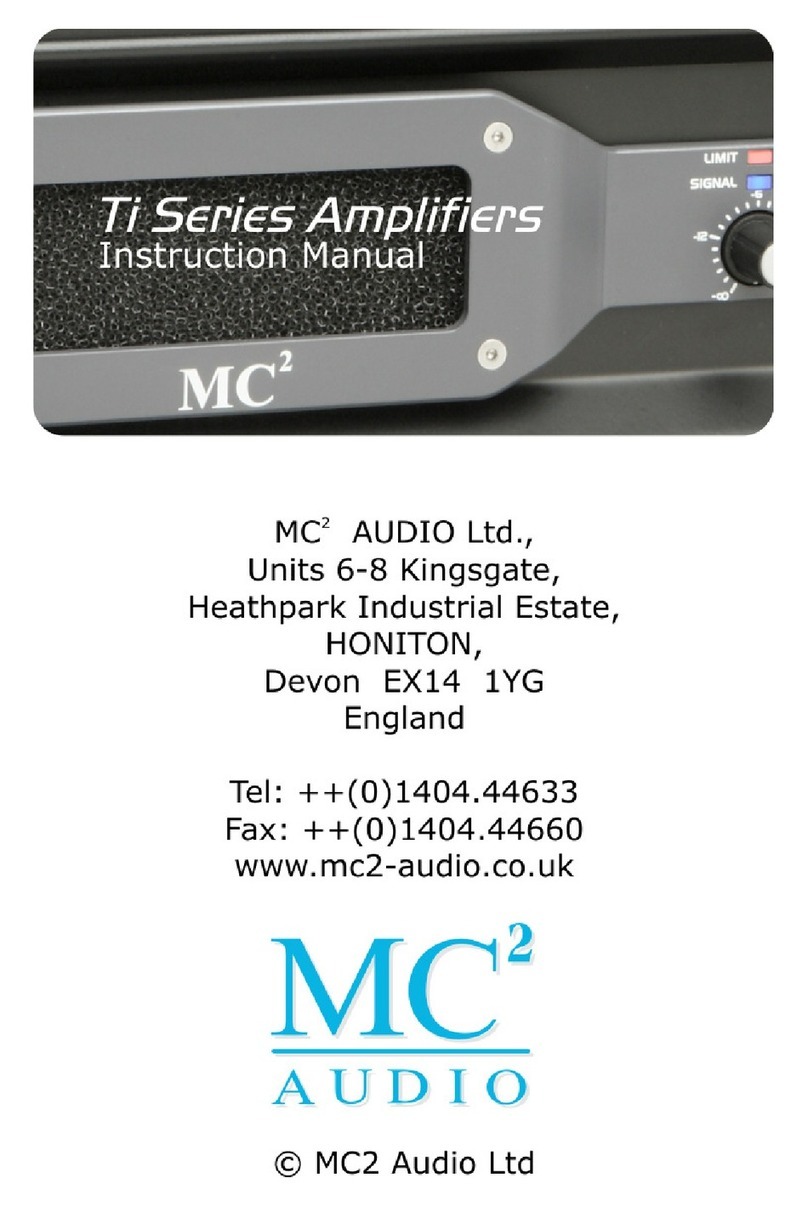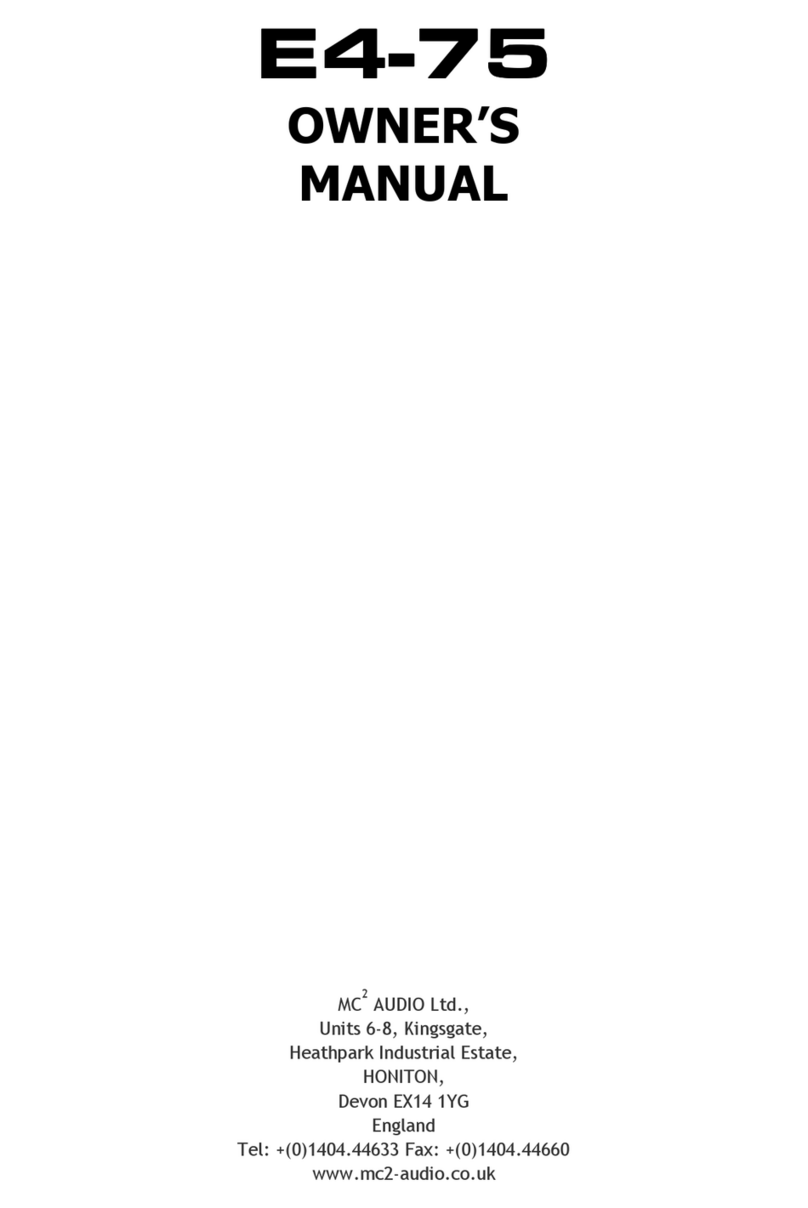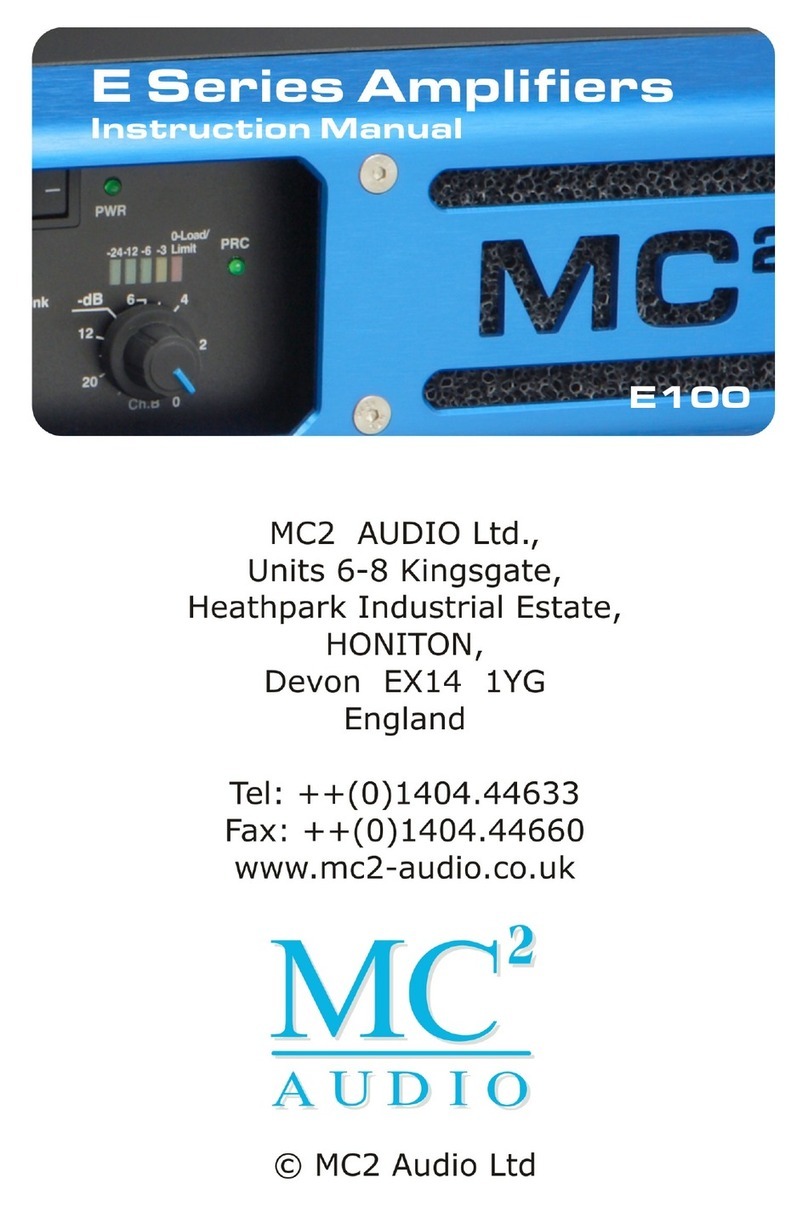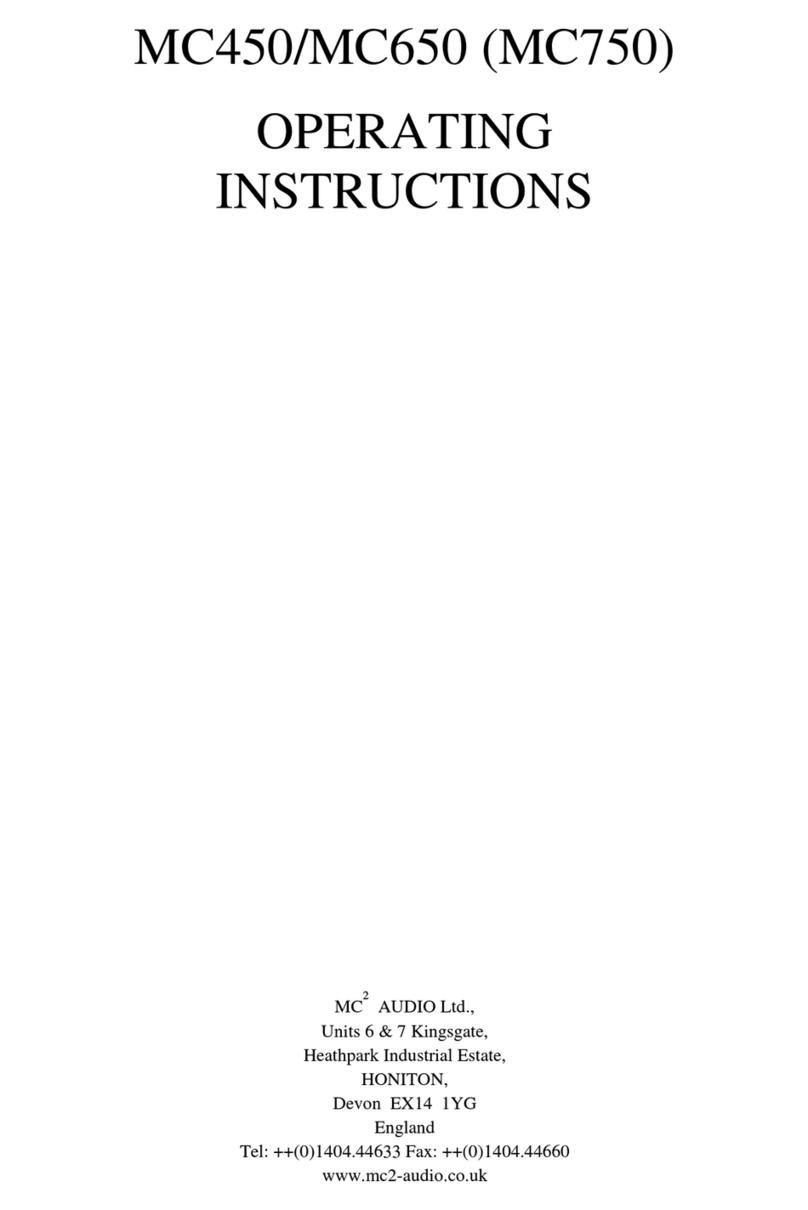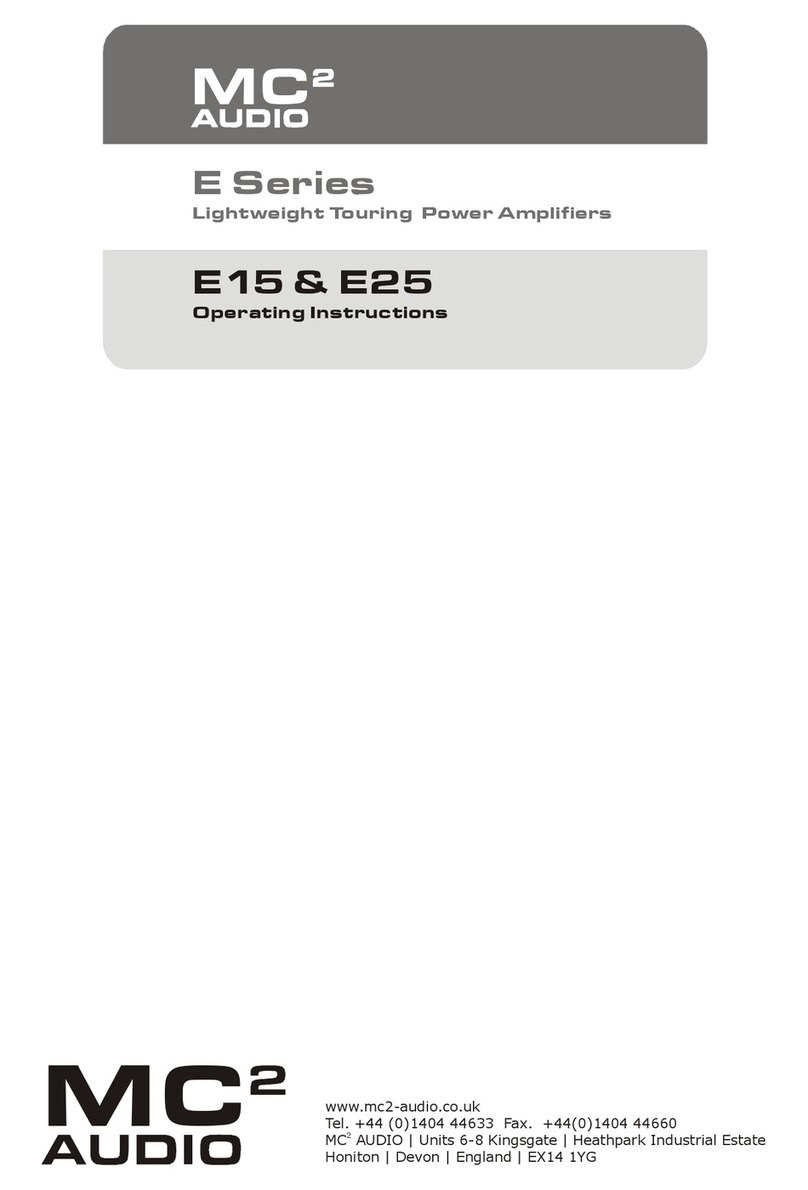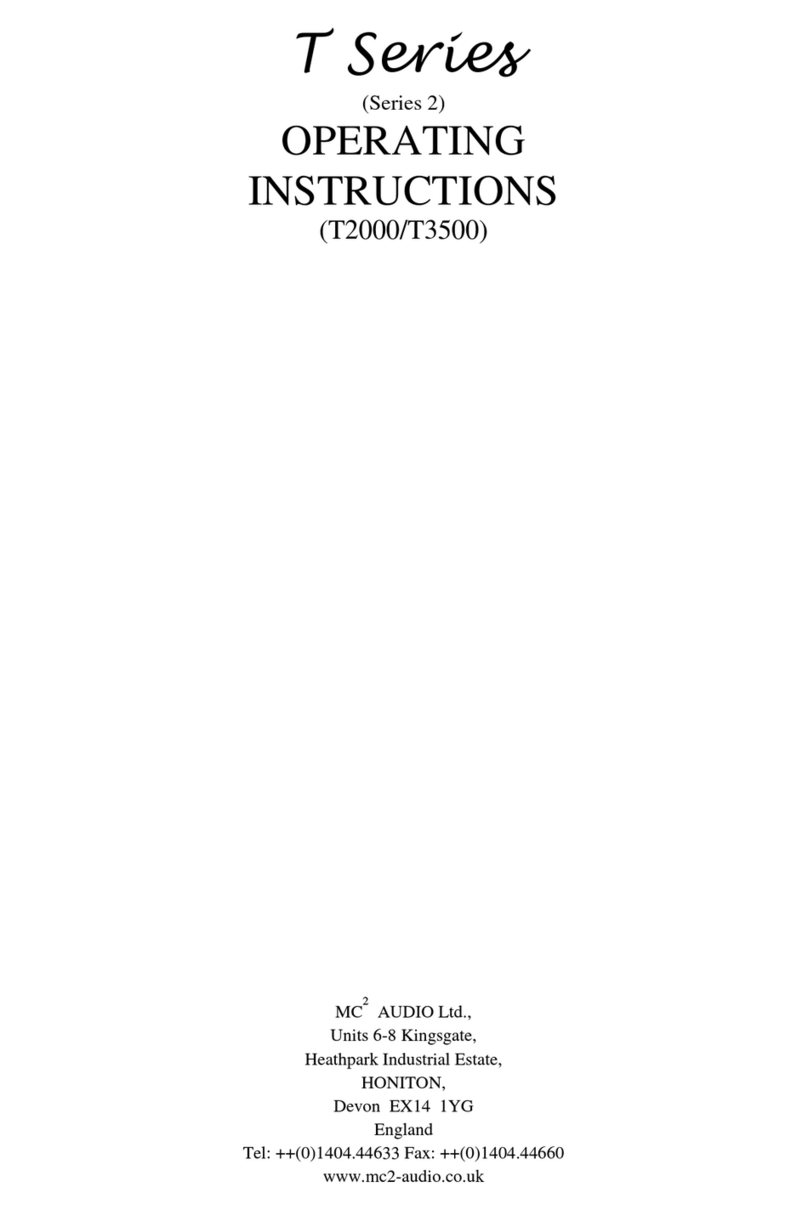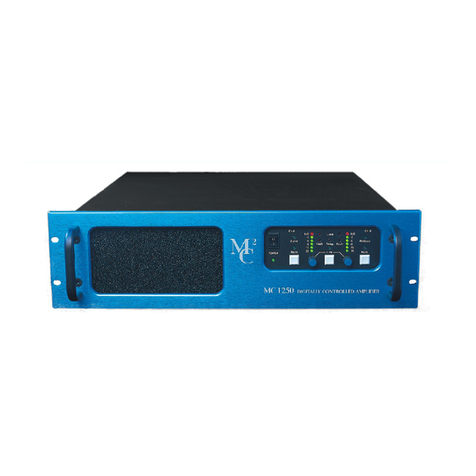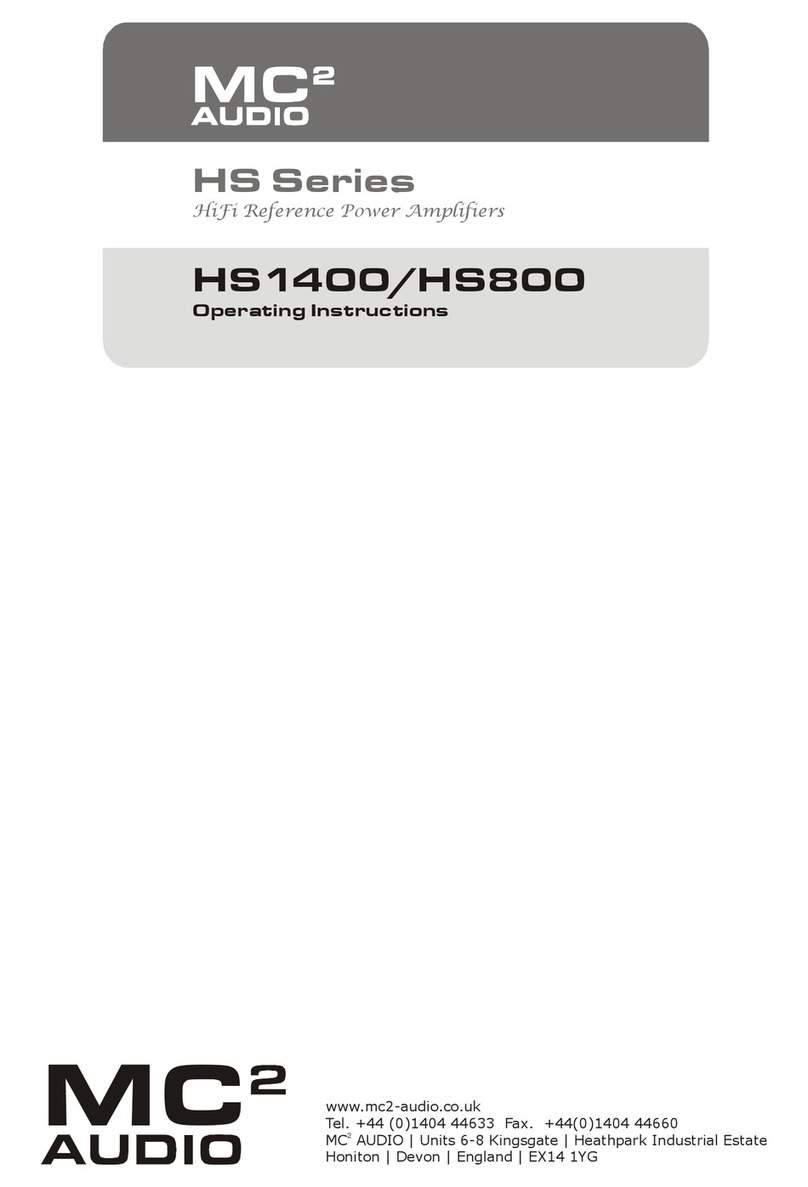Delta Series – Non-DSP Models Operating Instructions Page 7
INSTRUCTIONS DE SECURITE IMPORTANTES
ATTENTION: RISQUE DE CHOC ELECTRIQUE.
NE PAS OUVRIR
ATTENTION: Appareils de construction de CLASSE I doit être raccordé au réseau électrique via une prise de courant
reliée à la terre.
ATTENTION: Pour éviter toute blessure, cet appareil doit être solidement fixé à la torture, conformément aux
instructions d'installation.
1. Lisez ces consignes.
2. Conservez ces consignes.
3. Respectez tous les avertissements.
4. Respectez toutes les consignes d’utilisation.
5. N’utilisez jamais l’appareil à proximité d’un liquide.
6. Nettoyez l’appareil avec un chiff on sec.
7. Veillez à ne pas empêcher la bonne ventilation de
l’appareil via ses ouïes de ventilation. Respectez les
consignes du fabricant concernant l’installation de
l’appareil.
8. Ne placez pas l’appareil à proximité d’une source de
chaleur telle qu’un chauff age, une cuisinière ou tout
appareil dégageant de la chaleur (y compris un ampli de
puissance).
9. Ne supprimez jamais la sécurité des prises bipolaires
ou des prises terre. Les prises bipolaires possèdent deux
contacts de largeur diff érente. Le plus large est le contact
de sécurité. Les prises terre possèdent deux contacts plus
une mise à la terre servant de sécurité. Si la prise du bloc
d’alimentation ou du cordon d’ali-mentation fourni ne
correspond pas à celles de votre installation électrique,
faites appel à un électricien pour eff ectuer le changement
de prise.
10. Installez le cordon d’alimentation de telle façon que
personne ne puisse marcher dessus et qu’il soit protégé
d’arêtes coupantes. Assurez-vous que le cordon
d’alimentation est suffisamment protégé, notamment au
niveau de sa prise électrique et de l’endroit où il est relié à
l’appareil; cela est également valable pour une éventuelle
rallonge électrique.
11. Utilisez exclusivement des accessoires et des appareils
supplémentaires recommandés par le fabricant.
12. Utilisez exclusivement des chariots, des
diables, des présentoirs, des pieds et des surfaces de
travail recommandés par le fabricant ou livrés avec le
produit. Déplacez précautionneusement tout chariot ou
diable chargé pour éviter d’éventuelles blessures en cas
de chute.
13. Débranchez l’appareil de la tension secteur en cas
d’orage ou si l’appareil reste inutilisé pendant une longue
période de temps.
14. Les travaux d’entretien de l’appareil doivent être eff
ectués uniquement par du personnel qualifié. Aucun
entretien n’est nécessaire sauf si l’appareil est endommagé
de quelque façon que ce soit (dommages sur le cordon
d’alimentation ou la prise par exemple), si un liquide ou un
objet a pénétré à l’intérieur du châssis, si l’appareil a été
exposé à la pluie ou à l’humidité, s’il ne fonctionne pas
correctement ou à la suite d’une chute.
15. N'exposez pas cet équipement au fait de tomber goutte à
goutte ou au fait d'éclabousser et garantissez qu'aucun objet
rempli des liquides, comme les vases, n'est placé sur
l'équipement.
16. Pour complètement débrancher cet équipement de la
conduite principale de courant alternatif, débranchez la
corde de pouvoir du disjoncteur de conduite principale.
17. Cette unité est correspondue avec une corde de pouvoir
de 3 fils. Pour les raisons de sécurité, L'AVANCE DE TERRE
NE DEVRAIT ÊTRE DÉBRANCHÉE DANS AUCUNE
CIRCONSTANCE.
18. Mise au rebut appropriée de ce produit: Ce symbole
indique qu’en accord avec la directive DEEE (2012/19/EU) et
les lois en vigueur dans votre pays, ce produit ne doit pas
être jeté avec les déchets ménagers. Ce produit doit être
déposé dans un point de collecte agréé pour le recyclage des
déchets d’équipements électriques et électroniques (EEE).
Une mauvaise manipulation de ce type de déchets pourrait
avoir un impact négatif sur l’environnement et la santé à
cause des substances potentiellement dangereuses
généralement associées à ces équipements. n même temps,
votre coopération dans la mise au rebut de ce produit
contribuera à l’utilisation efficace des ressources
naturelles. Pour plus d’informations sur ’endroit où vous
pouvez déposer vos déchets d’équipements pour le
recyclage, veuillez contacter votre mairie ou votre centre
local de collecte des déchets.
Le symbole représentant un éclair fléché
dans un triangle équilatéral a pour but
d’alerter l’utilisateur de la présence
d’une “tension dangeruese” non isolée à
l’intérieur du boitier, pouvant être d’une
force suffisante pour constituer un risqué
d’électrocution.
Le point d’exclamation dans un triangle
équilatéral a pour but d’alerter
l’untilisateur de la présence
d’instructions importantes concernant le
fonctionnement et la maintenance, dans
la documentation qui accompagne
l’appariel.
